With the huge Millennial generation finally buying houses, the National Association of Home Builders has taken a deep dive into their various preferences for where and how they are going to live. Last year it conducted the fourth in a series of buyer preference surveys, adding to data collected in 2007, 2012, and 2015. A report by Paul Emrath analyzes those choices, how they differ across age groups and changed as those groups have aged.
Some of the survey's findings specific to Millennials, which they define as those currently 23 to 39 years of age, is that they prefer to buy new homes built for sale rather than those that are custom built and, while most prefer to buy in the suburbs there is an increasing desire to live in central cities. Their preferences include a set of amenities such as wet bars, whirlpool tubs, kitchen seating and central islands with a range which they rank higher than do Gen X, Baby Boomers and seniors. They also have a clear preference for specialized rooms such as exercise or media centers. However, Emrath says while some of the differences the youngest group expresses compared to older groups are unique and lasting, earlier surveys indicate that many will decline over time. Surprisingly, when it comes to environmental concerns, Millennials don't differ much from the older generations, reflecting a falling desire for environmentally friendly homes, especially if they have to pay more for the feature.
Among general preferences, the number of those who were in the Millennial-equivalent age group in 2007, 37 percent preferred a custom home built on their own lot versus 28 percent who wanted "spec" built home. Today's Millennials would purchase "off the rack" while the desire for custom built has shrunk to 18 percent. The choice of an already existing home has consistently hovered around 40 percent over time.
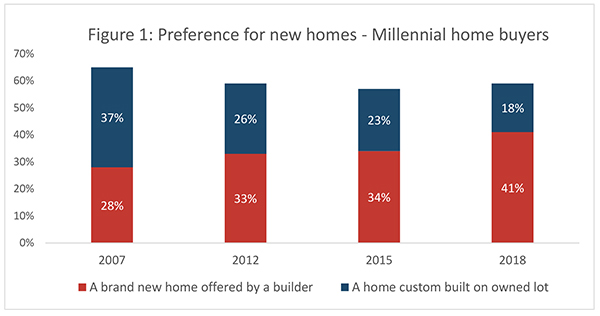
Millennials are outliers in many of their preferences. The older three age groups are more evenly divided in across the above three housing choices and more consistent with the other two groups. Millennials are unique in their preference for a new, spec-built home. Emrath says it is important to realize that the market for housing is heavily tilted towards existing homes, which is almost five times bigger than the market for new homes.
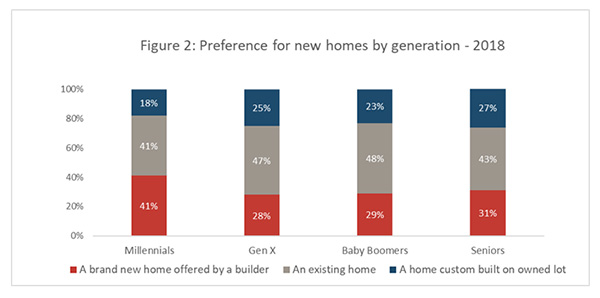
Regarding the general location of the home, there is a clear pattern in the 2018 survey in that older generations show less desire to live in a central city, more desire to live in the outlying suburbs, and, to some extent, the close in suburbs.
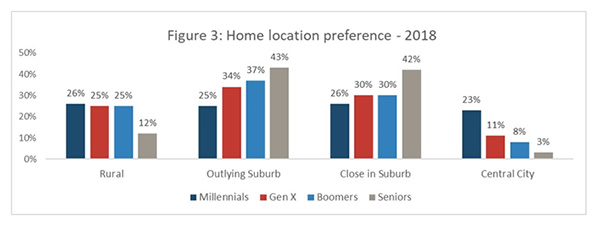
In Figure 4, which shows Millennial preferences over time, there is a clear drop in the desire to live in the suburbs and a sharp increase in desire to live in the central city. This contrasts greatly with the older generations, who have generally demonstrated an increasing preference for the suburbs over time. Although Millennials' location preferences are generally similar to older generations in the earlier surveys, their increased preference for a central city location in the more recent surveys appears unique, however it is still the least popular of the four choices.
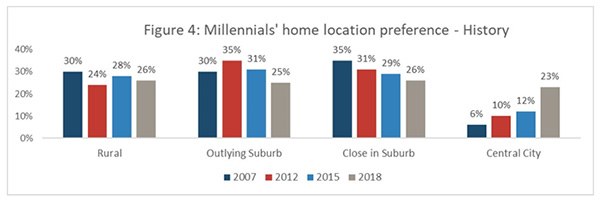
The Millennial age group has grown in its willingness to buy a smaller house to make buying more affordable. This inclination has risen from 21 percent in 2007 to 34 percent in the most recent survey. The upward curve indicating acceptance of a smaller lot is shallower, trending from 29 percent to 34 percent over the same period. Among older generations, only the seniors haven't increasingly considered a smaller home.
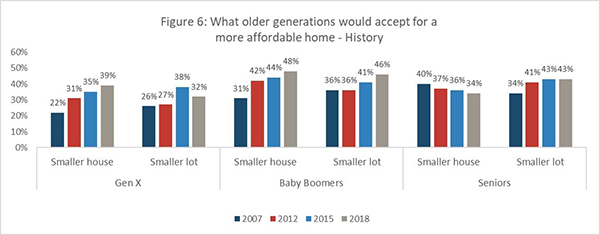
NAHB's 2018 survey asked recent and prospective buyers to rate 175 different features on the same four-tier scale: "Do not want", "Indifferent", "Desirable", or "Essential/Must Have." The most wanted feature was a laundry room followed by a hardwood exterior and a patio. Emrath finds it surprising that "something so non-essential to daily life [as a patio] is the third most wanted feature; however, even higher numbers appear for the older generations, so it is apparent that this is not an outlier."
Energy Star windows were desired to some extent by 76 percent of Millennials and placed 15th on their list. However, it was second on the lists for older generations. A similar situation was apparent regarding both Energy Star appliances and an Energy Star rating for the whole home.
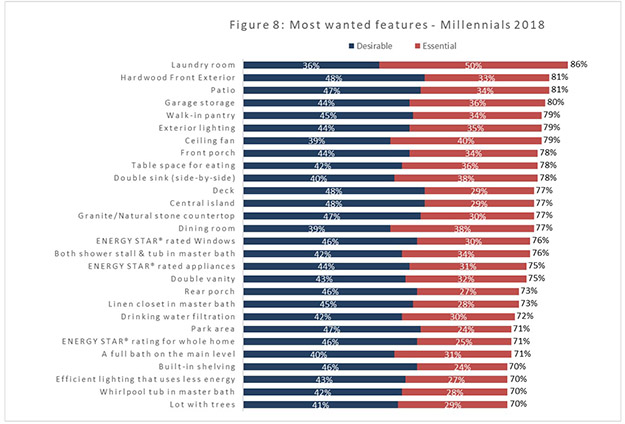
What features don't they want? Figure 9 lists the least wanted features of Millennials in 2018, with elevators at the top of the list. This is apparently not an "age thing", as it was also the least desired feature of the older generations, and with some of them wanting it even less than the youngest group.
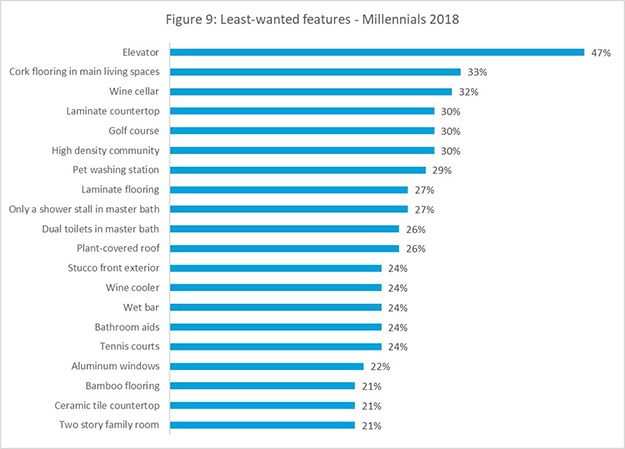
The desire for Energy Star rated anything was only one indication that the environment is not a high homebuying concern for Millennials. Emrath says the only significant changes in the surveys over time was the steady decline for an environmentally friendly home without wanting to pay more for one. This trend has been visible in the older generations as well. Maybe Millennials are more environmentally conscious, but they don't seem to reflect this in their home buying preferences any more so than other generations.







